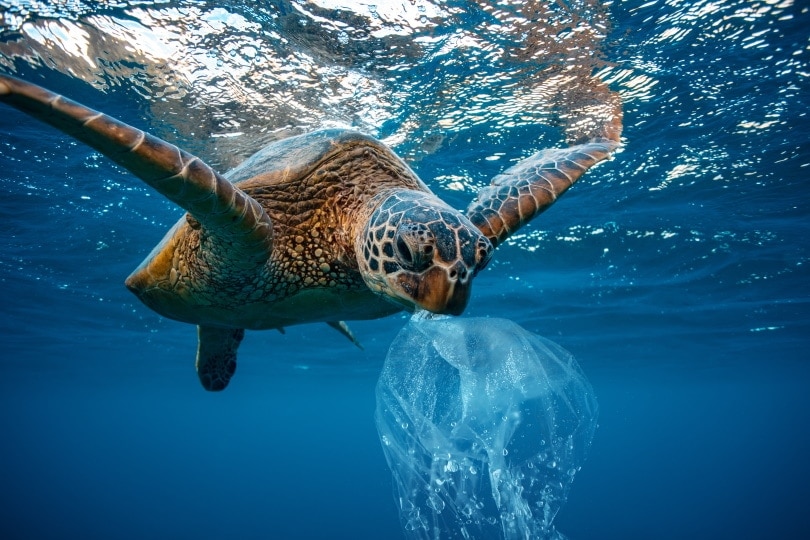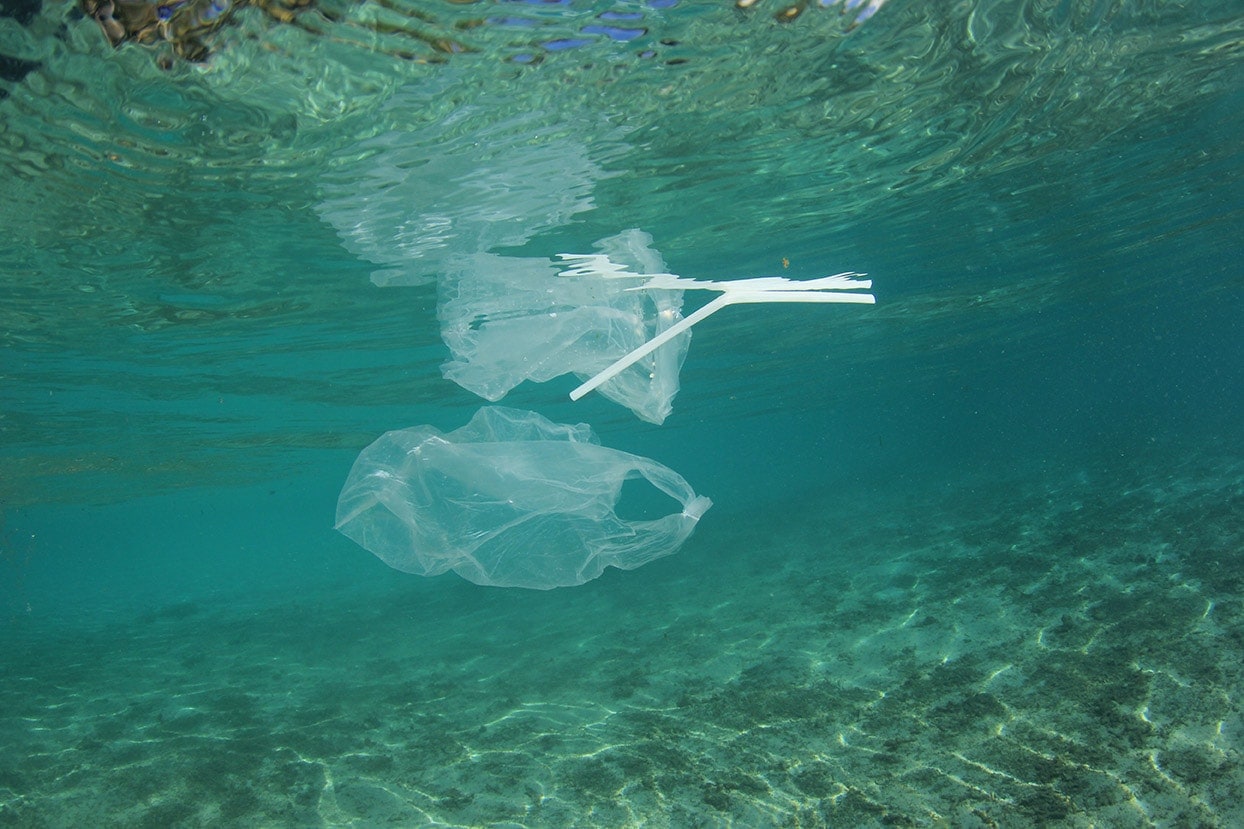According to the latest estimates from 2021, the planet’s oceans contain over 5 trillion pieces of plastic or 363,762,732,605 pounds. By 2040, researchers expect plastic waste to increase to 29 million metric tons. Most of the pollution (80%) originates from land, and the remainder comes from marine vessels. Although recycling can offset the number of new petroleum-based items produced each year, the process is outpaced by the world’s increased demand for plastic. Since plastic particles may eventually surpass the number of fish in the ocean, cleanup projects and improved regulations must accelerate to protect one of our most beneficial natural resources.

What Effect Does Plastic Waste Have on the Ocean?
When plastic winds up in the sea, it does not decompose like organic materials. It breaks apart into minuscule particles and eventually enters the food chain of marine organisms. Single-serving plastic containers and utensils, water bottles, and discarded or lost fishing nets make up the bulk of the waste in the ocean.
Each year, over 100,000 marine creatures perish from plastic pollution; most die when they become tangled in nets or ingest pieces of plastic. Sea birds, whales, dolphins, fish, invertebrates, and sea turtles have experienced the most significant impacts from the waste. Although fishing nets may represent the greatest danger for marine organisms, ingested plastic is also a hazard that alarmed marine researchers when they recognized the extent of the problem.
Plastic garbage can resemble the prey of marine animals. For instance, a sea turtle often mistakes a plastic bag or round container for jellyfish, which is one of its favorite meals. The first report of a marine creature ingesting plastic was in 1966 when dead Laysan albatross chicks were discovered with pieces of plastic toys and container lids in their bellies.
However, the volume of plastic waste has increased to an incomprehensible level since then, and scientists estimate that up to 800 different marine creatures have ingested plastic. In 2018, a dead sperm whale washed up on a Spanish beach, and when it was analyzed, technicians found 66.14 pounds of plastic blocking its digestive system.

How Does Plastic Wind Up in the Sea?
The world’s rivers, over 1000 of them, are responsible for around 80% of the plastic waste in the ocean. In the United States, the Mississippi River is the largest carrier of plastic pollution, but worldwide, eight of China’s rivers and two in Africa are responsible for up to 90% of the ocean’s waste. The Chang Jiang and Indus carry the most plastic to the sea.

Final Thoughts
We depend on the oceans for food, power, commerce, transportation, medical breakthroughs, and entertainment, but we continue to assault them with plastic waste, among other pollutants. Removing trash from the sea is only part of the solution; plastic production must be drastically reduced by all nations to prevent a global marine disaster. Although researchers are certain that marine animals are ingesting plastic, the long-term effects of consuming it and how it affects humans who eat contaminated seafood are not yet entirely understood. Until every country prioritizes plastic waste reduction and cleanup measures, marine life will continue to suffer.
Featured Image Credit: Rich Carey, Shutterstock
